PROPERTY FROM A PRIVATE GERMAN COLLECTION ALEXEJ VON JAWLENSKY (1864-1941) Stillleben mit Blumen und Früchten signed twice with the artist's initials 'A. J.' (lower left) and 'A. J' (upper right) oil on canvas 57.8 x 48.4cm (22 3/4 x 19 1/16in). Painted circa 1905 Fußnoten Provenance Galerie Nierendorf, Berlin & New York. Sidney Janis Gallery, New York (1957). Leonard Hutton Gallery, New York. Eugene V. Thaw Gallery, New York. Private collection, New York; their sale, Sotheby's, New York, 5 November 1981, lot 223. Anon. sale, Karl & Faber, Munich, 24 - 25 November 1983, lot 903. Galerie Raimund Thomas, Munich (1985). Galerie Ludorff, Düsseldorf (1987). Galerie Harald Wolff, Munich & Luxembourg. Private collection, Hamburg (acquired from the above on 19 November 1997). Thence by descent to the present owners. Exhibited (Possibly) Munich, Kunstsalon Krause, Alexej von Jawlensky, 1905. New York, Sidney Janis Gallery, Jawlensky, 4 - 30 March 1957, no. 1. Munich, Galerie Thomas, Expressiunismus Klassische Moderne, 1985, no. 21. Literature C. Weiler, Alexej Jawlensky, Cologne, 1959, no. 707 (illustrated p. 152). M. Jawlensky, L. Pieroni-Jawlensky & A. Jawlensky, Alexej von Jawlensky, Catalogue Raisonné of the Oil Paintings, Vol I., 1890 - 1914, London, 1991, no. 118 (illustrated p. 123). Painted circa 1905, Stillleben mit Blumen und Früchten is a vibrant and consummate example issuing from one of the most innovative periods of Alexej von Jawlensky's oeuvre. By the turn of the century, Jawlensky had already completed his studies at the private painting school of Anton Ažbe in Munich, where he lived with fellow artist Marianne von Werefkin. He had also established close contact with the artists of the Munich school such as Lovis Corinth Wilhelm Leibl and Leo Putz whose combined influence was of great significance for the thriving Jawlensky. Lovis Corinth in particular was a great supporter of the young artist and recommended some of his works to important exhibitions such as the Berliner Succession. Besides the influence of the national and local art scene, 1902 was to mark a pronounced orientation towards the Parisian avant-garde when Jawlensky began to execute still lifes and landscapes in the Neo-Impressionist style. In the following year he travelled to Paris, and it was here that Jawlensky was first captivated by the intense expressionism of Vincent van Gogh Later, in the summer of 1905, he painted alongside the followers of Paul Gauguin during a formative trip to Brittany. It was not until 1906 that Jawlensky first recalled seeing a canvas by Gauguin while at the home of an acquaintance, however it is highly likely that Jawlensky had already been exposed to the concepts of 'Synthetism' expounded by the Pont-Aven school during his sojourn in the region. The synthetic style advocated an emphasis on a bold application of pure colour and a simplified composition primarily derived from the artist's memory or feelings in relation to the subject. A close friend of the artist, Pater Willibrod Verkade, was later to introduce Jawlensky to a key acolyte of the Pont-Aven school and founder of the Nabis, Paul Sérusier in 1907. As Jawlensky would later recount in his memoirs, the still life during this period provided the genre though which he could most successfully explore and refine his own artistic language. In accordance with the artists of the Pont Aven school, a faithful representation of the subject was rejected in favour of a scene reinvented according to the artist's visual imagination and poetic whim: 'At that time I was painting mostly still lifes' Jawlensky explained, 'because in them I could more easily find myself. I tried in these still life paintings to go beyond the material objects and express in colour and form the thing which was vibrating within me, and I achieved some good results' (Jawlensky quoted in 'Memoir dictated to Lisa Kümmel, Wiesbaden, 1937', pp. 25-33 in M. Jawlensky, L. Pieroni-Jawlensky and A. Jawlensky
PROPERTY FROM A PRIVATE GERMAN COLLECTION ALEXEJ VON JAWLENSKY (1864-1941) Stillleben mit Blumen und Früchten signed twice with the artist's initials 'A. J.' (lower left) and 'A. J' (upper right) oil on canvas 57.8 x 48.4cm (22 3/4 x 19 1/16in). Painted circa 1905 Fußnoten Provenance Galerie Nierendorf, Berlin & New York. Sidney Janis Gallery, New York (1957). Leonard Hutton Gallery, New York. Eugene V. Thaw Gallery, New York. Private collection, New York; their sale, Sotheby's, New York, 5 November 1981, lot 223. Anon. sale, Karl & Faber, Munich, 24 - 25 November 1983, lot 903. Galerie Raimund Thomas, Munich (1985). Galerie Ludorff, Düsseldorf (1987). Galerie Harald Wolff, Munich & Luxembourg. Private collection, Hamburg (acquired from the above on 19 November 1997). Thence by descent to the present owners. Exhibited (Possibly) Munich, Kunstsalon Krause, Alexej von Jawlensky, 1905. New York, Sidney Janis Gallery, Jawlensky, 4 - 30 March 1957, no. 1. Munich, Galerie Thomas, Expressiunismus Klassische Moderne, 1985, no. 21. Literature C. Weiler, Alexej Jawlensky, Cologne, 1959, no. 707 (illustrated p. 152). M. Jawlensky, L. Pieroni-Jawlensky & A. Jawlensky, Alexej von Jawlensky, Catalogue Raisonné of the Oil Paintings, Vol I., 1890 - 1914, London, 1991, no. 118 (illustrated p. 123). Painted circa 1905, Stillleben mit Blumen und Früchten is a vibrant and consummate example issuing from one of the most innovative periods of Alexej von Jawlensky's oeuvre. By the turn of the century, Jawlensky had already completed his studies at the private painting school of Anton Ažbe in Munich, where he lived with fellow artist Marianne von Werefkin. He had also established close contact with the artists of the Munich school such as Lovis Corinth Wilhelm Leibl and Leo Putz whose combined influence was of great significance for the thriving Jawlensky. Lovis Corinth in particular was a great supporter of the young artist and recommended some of his works to important exhibitions such as the Berliner Succession. Besides the influence of the national and local art scene, 1902 was to mark a pronounced orientation towards the Parisian avant-garde when Jawlensky began to execute still lifes and landscapes in the Neo-Impressionist style. In the following year he travelled to Paris, and it was here that Jawlensky was first captivated by the intense expressionism of Vincent van Gogh Later, in the summer of 1905, he painted alongside the followers of Paul Gauguin during a formative trip to Brittany. It was not until 1906 that Jawlensky first recalled seeing a canvas by Gauguin while at the home of an acquaintance, however it is highly likely that Jawlensky had already been exposed to the concepts of 'Synthetism' expounded by the Pont-Aven school during his sojourn in the region. The synthetic style advocated an emphasis on a bold application of pure colour and a simplified composition primarily derived from the artist's memory or feelings in relation to the subject. A close friend of the artist, Pater Willibrod Verkade, was later to introduce Jawlensky to a key acolyte of the Pont-Aven school and founder of the Nabis, Paul Sérusier in 1907. As Jawlensky would later recount in his memoirs, the still life during this period provided the genre though which he could most successfully explore and refine his own artistic language. In accordance with the artists of the Pont Aven school, a faithful representation of the subject was rejected in favour of a scene reinvented according to the artist's visual imagination and poetic whim: 'At that time I was painting mostly still lifes' Jawlensky explained, 'because in them I could more easily find myself. I tried in these still life paintings to go beyond the material objects and express in colour and form the thing which was vibrating within me, and I achieved some good results' (Jawlensky quoted in 'Memoir dictated to Lisa Kümmel, Wiesbaden, 1937', pp. 25-33 in M. Jawlensky, L. Pieroni-Jawlensky and A. Jawlensky
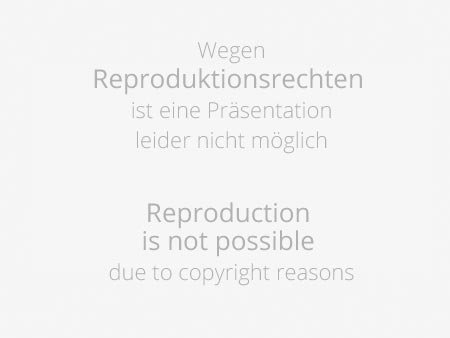

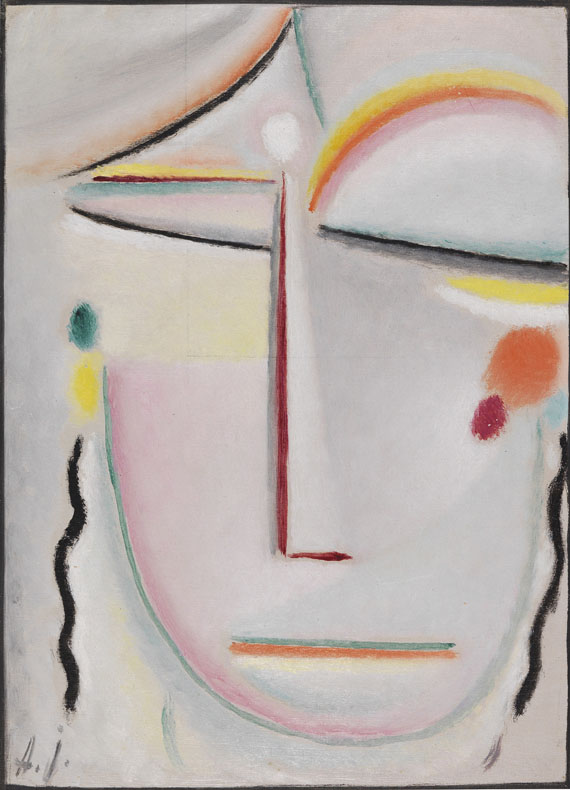
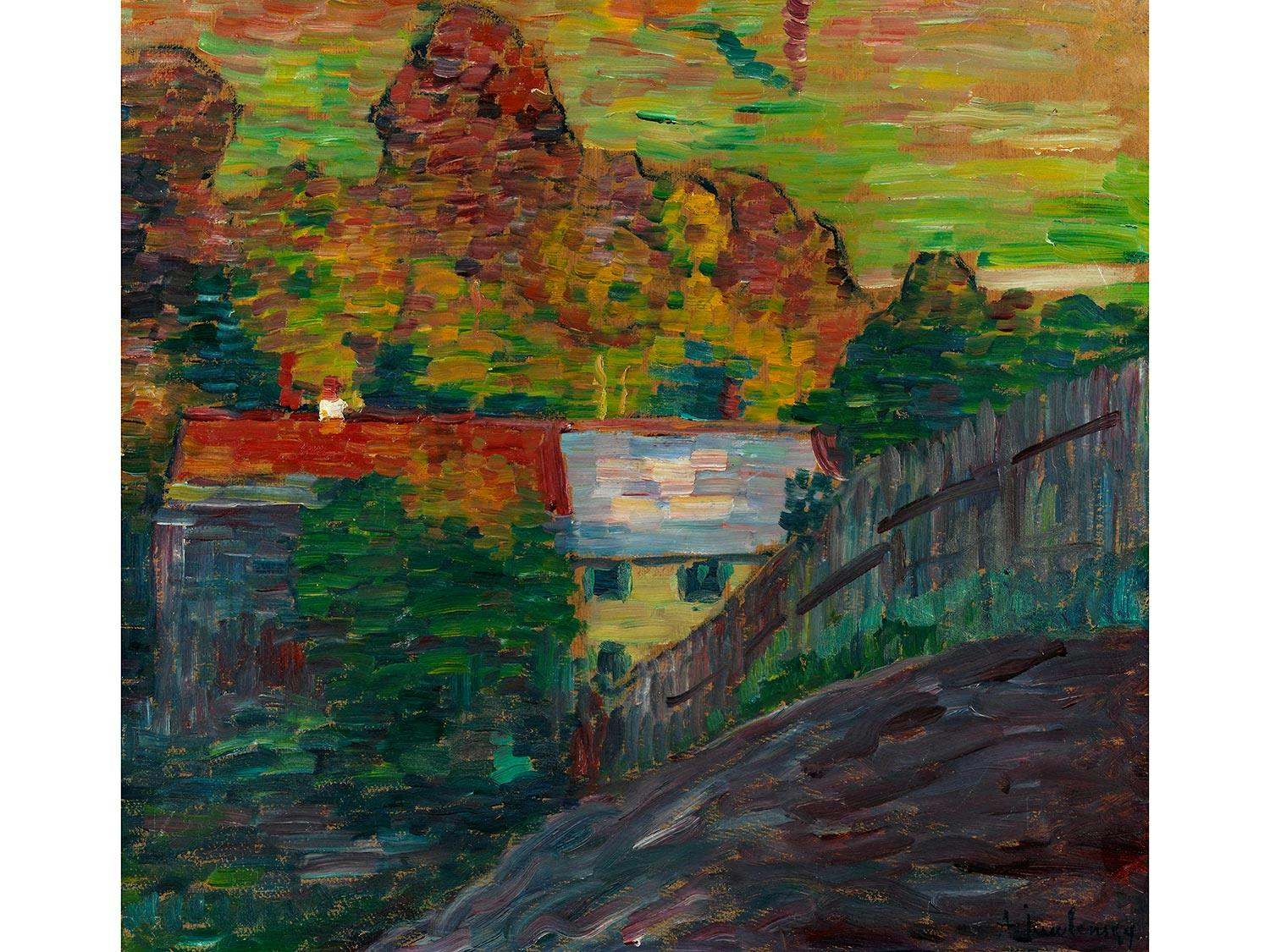
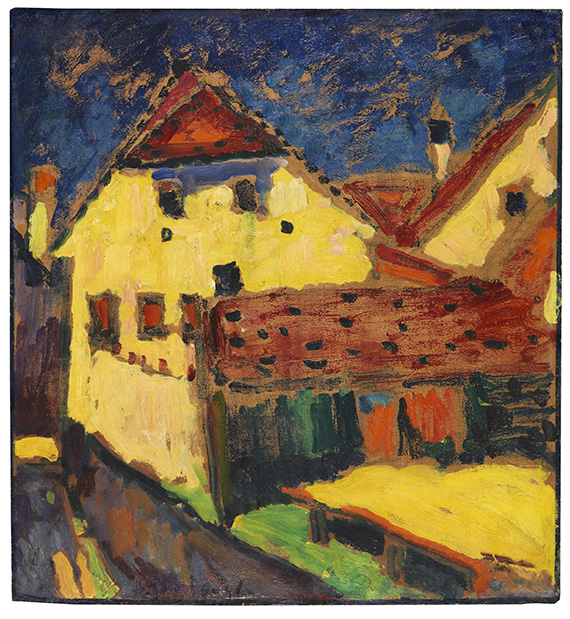
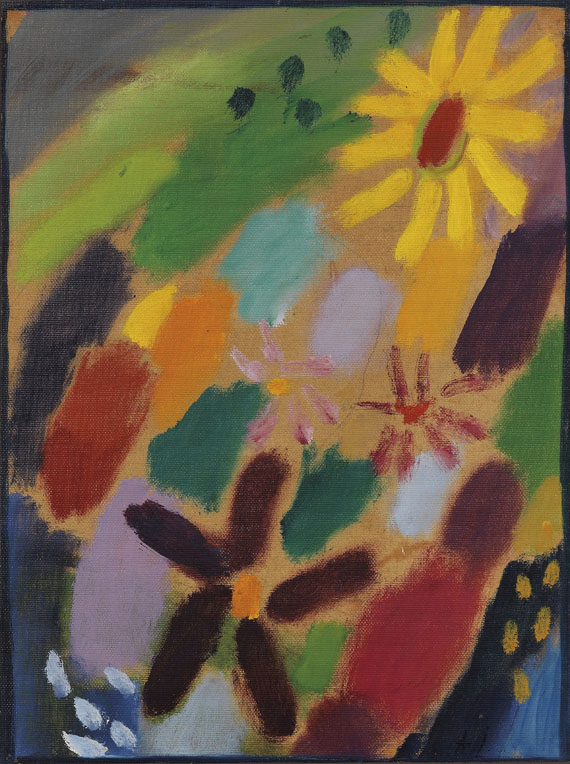
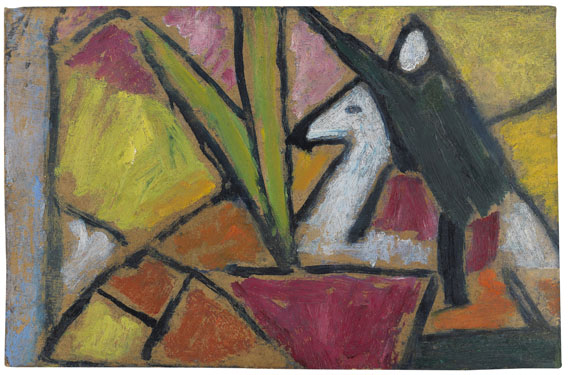
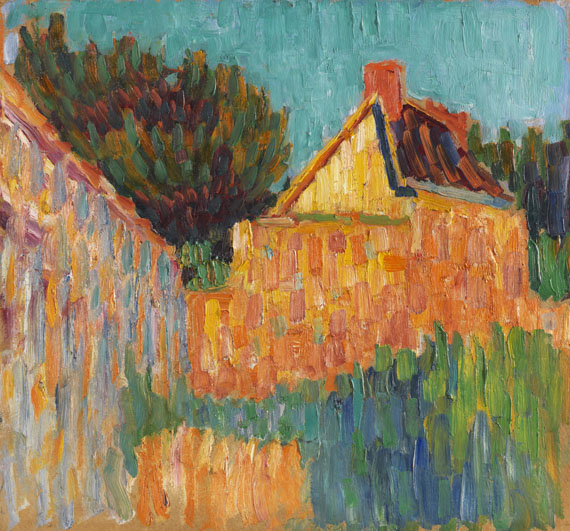
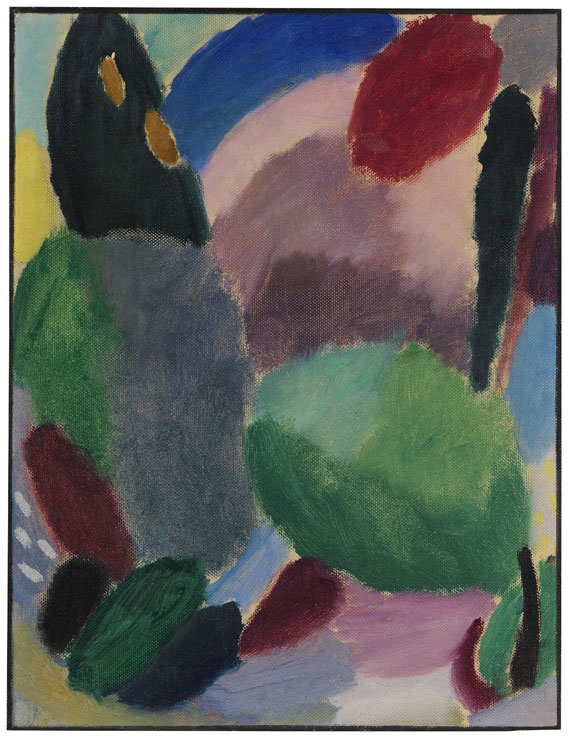
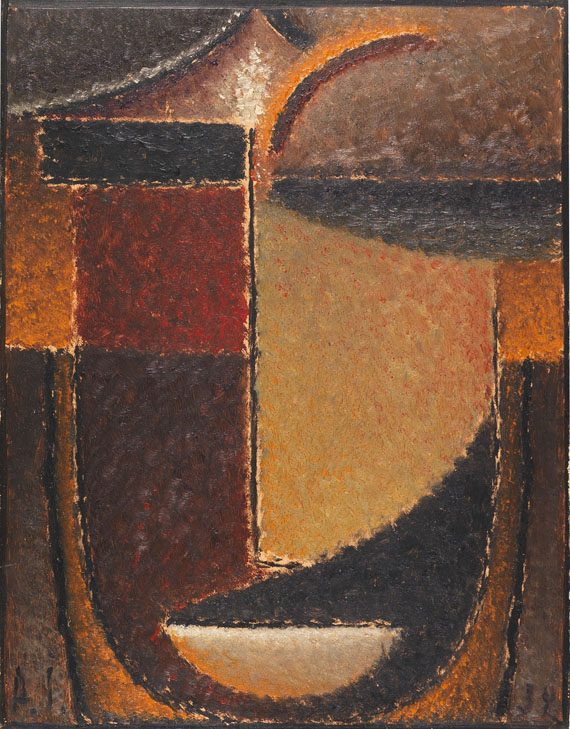



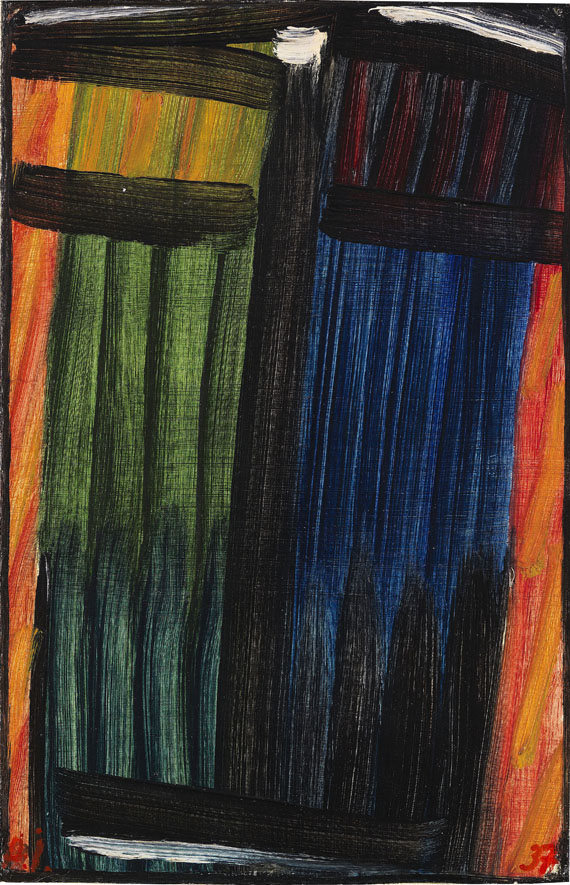

Try LotSearch and its premium features for 7 days - without any costs!
Be notified automatically about new items in upcoming auctions.
Create an alert